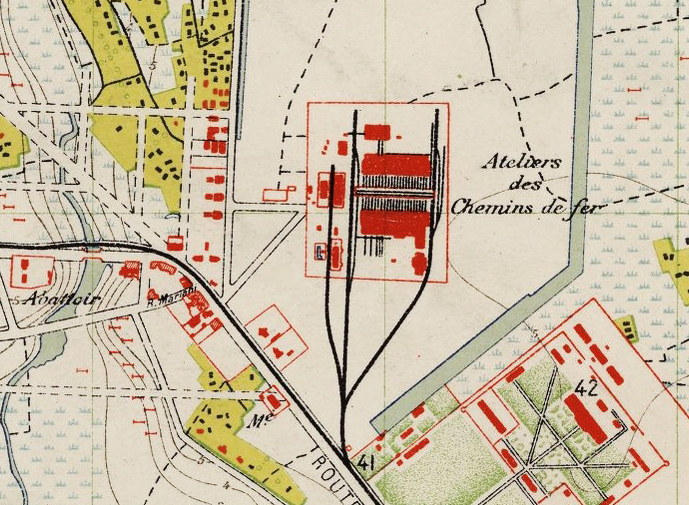
The Grand Ateliers des chemins de fer de Truong-Thi on a 1925 map
Built in 1905 by the Chemins de fer de l’Indochine (CFI), the Grand Ateliers des chemins de fer de Truong-Thi was one of Việt Nam’s three great colonial railway ateliers, but it did not survive the First Indochina War.
During the construction of the first section of the Transindochinois (North-South line) from Hà Nội to Vinh in 1903-1905, a 5km extension was built from Vinh to the port of Bến Thủy. This extension ran through Trường Thi, an area of land which had once been reserved for royal mandarin examinations.
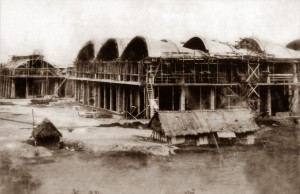
The Grand Ateliers des chemins de fer de Truong-Thi under construction in 1905
By this time there were two railway networks in Tonkin (northern Việt Nam): The “non-conceded” lines (réseaux non concédés) of Hà Nội–Vinh and Hà Nội–Đồng Đăng, run directly by the government rail operator CFI, and the Hải Phòng–Gia Lâm–Yên Viên–Lào Cai line, part of the future Yunnan-fu (Kunming) line which was franchised to the Compagnie française des chemins de fer de l’Indochine et du Yunnan (French Indochina and Yunnan Railway Company, CIY).
At the outset, all repairs and maintenance work on rolling stock from the CFI lines in the north was carried out under a reciprocal arrangement with the CIY at its Grand Ateliers des chemins de fer de Gia Lâm (Gia Lâm Works), which opened in 1903. However, just two years later, CFI built its own dedicated railway workshop. And the place they chose to build it was Trường Thi, near Vinh.
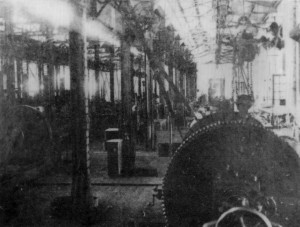
A 1927 image of the interior of the Grand Ateliers des chemins de fer de Truong-Thi
Initially focused on lifting and heavy repairs, the atelier at Trường Thi was expanded in 1925, enabling it to assemble new rolling stock parts shipped to Indochina via Hải Phòng port.
In 1934, it assembled and tested two rubber-tyred Michelin ZZAB-1 “Micheline” petrol railcars on behalf of CIY before they were set to work the Lào Cai and Yunnan-fu line.
Reporting on the grand opening of the penultimate section of the Transindochinois in January 1936, La Croix newspaper praised the “modern wagons couchettes (sleeping cars) and restaurant cars, constructed entirely in the railway ateliers at Truong-Thi near Vinh, the comfort and sober elegance of which rivals that of the best rolling stock of its kind elsewhere in the world.”
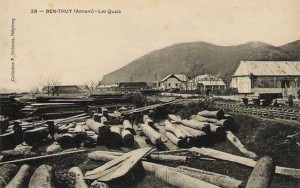
A colonial-era postcard of Bến Thủy showing the railway line next to the wharf
By this time, Trường Thi – incorporated along with Bến Thủy in 1927 into the city of Vinh – had developed into a sizeable railway town, and in the 1930s, many employees of the Grand Ateliers des chemins de fer de Truong-Thi turned to mass political organisation as a means of campaigning against low wages, unsafe working conditions and other social injustices inflicted by the colonial authorities. During the brief period of relatively liberal colonial policy which followed the May 1936 accession to power of Léon Blum’s left-wing Popular Front party in France, industrial action at Trường Thi reached a peak, causing considerable disruption to the northern network.
In the wake of the Japanese occupation of 1940, Trường Thi railway works returned to normal operation, but as key pieces of transport infrastructure, both the works and the Bến Thủy branch line on which it stood were targeted in 1943-1945 by Allied bombers and sustained serious damage in a raid of 13 February 1944. A further raid of 20 July 1945 reduced the works to rubble.
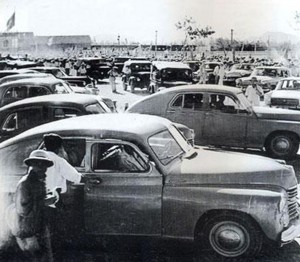
A busy scene at Vinh station in the late colonial era
After 1945, Trường Thi was not rebuilt. During the First Indochina War, Vinh became the heart of the Việt Minh’s Military Zone IV (the “Thanh-Nghệ-Tĩnh” resistance zone) and following the departure of the French, the priority was simply to restore the North-South line above the seventeenth parallel – a task which was barely completed by the time the United States Air Force began its bombing campaigns of 1965-1972, which left the railway in north-central Việt Nam in ruins.

A 1925 map showing the Vinh-Bến Thủy branch line
Tim Doling is the author of The Railways and Tramways of Việt Nam (White Lotus Press, Bangkok, 2012) and also gives talks on Việt Nam railway history to visiting groups.
A full index of all Tim’s blog articles since November 2013 is now available here.
Join the Facebook group Rail Thing – Railways and Tramways of Việt Nam for more information about Việt Nam’s railway and tramway history and all the latest news from Vietnam Railways.
You may also be interested in these articles on the railways and tramways of Việt Nam, Cambodia and Laos:
A Relic of the Steam Railway Age in Da Nang
By Tram to Hoi An
Date with the Wrecking Ball – Vietnam Railways Building
Derailing Saigon’s 1966 Monorail Dream
Dong Nai Forestry Tramway
Full Steam Ahead on Cambodia’s Toll Royal Railway
Goodbye to Steam at Thai Nguyen Steel Works
Ha Noi Tramway Network
How Vietnam’s Railways Looked in 1927
Indochina Railways in 1928
“It Seems that One Network is being Stripped to Re-equip Another” – The Controversial CFI Locomotive Exchange of 1935-1936
Phu Ninh Giang-Cam Giang Tramway
Saigon Tramway Network
Saigon’s Rubber Line
The Changing Faces of Sai Gon Railway Station, 1885-1983
The Langbian Cog Railway
The Long Bien Bridge – “A Misshapen but Essential Component of Ha Noi’s Heritage”
The Mysterious Khon Island Portage Railway
The Railway which Became an Aerial Tramway
The Saigon-My Tho Railway Line

